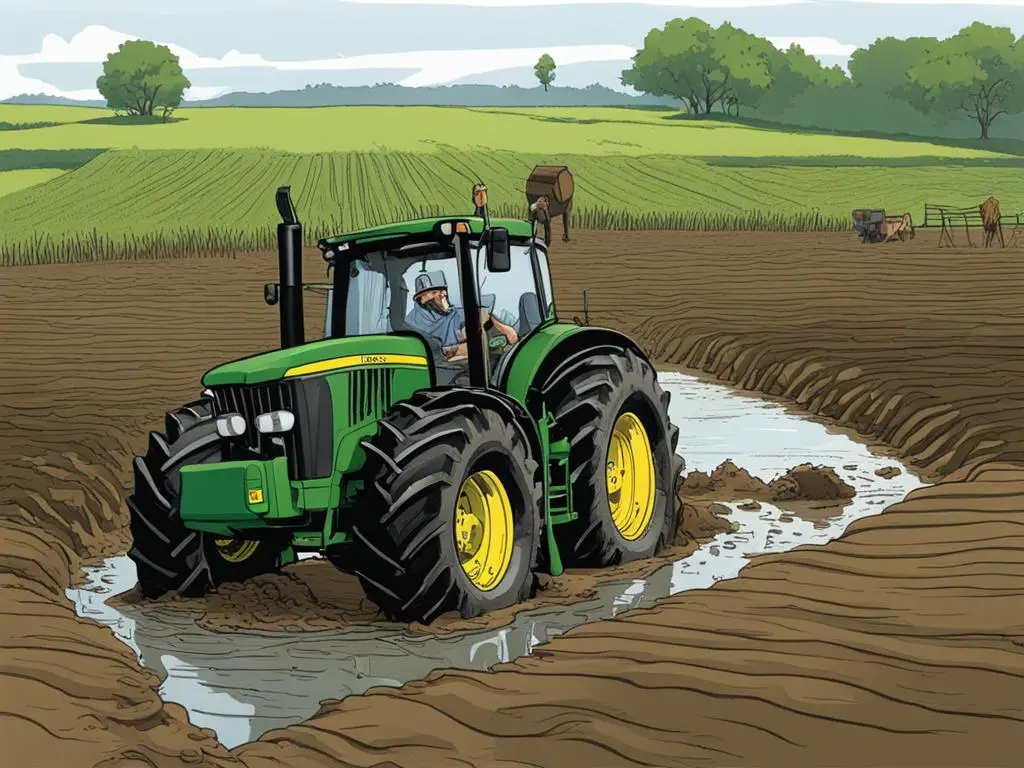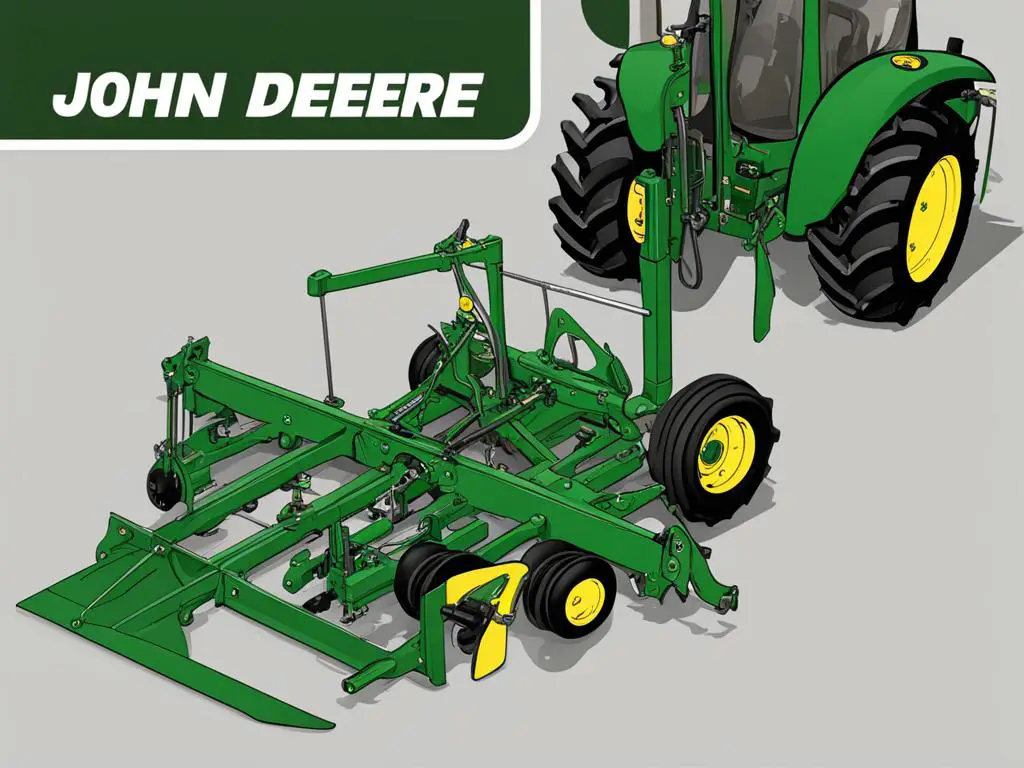The John Deere 333G skid steer is a robust piece of machinery widely recognized for its reliability in the construction and landscaping industries. Known for enhancing productivity and operational efficiency, the 333G model is designed to tackle a multitude of tasks. Yet, even the most durable machines have their share of problems that users might encounter during their operational lifespan. Understanding the common issues that could arise with your John Deere 333G will help you be prepared for potential difficulties and ensure that your equipment operates at its best.
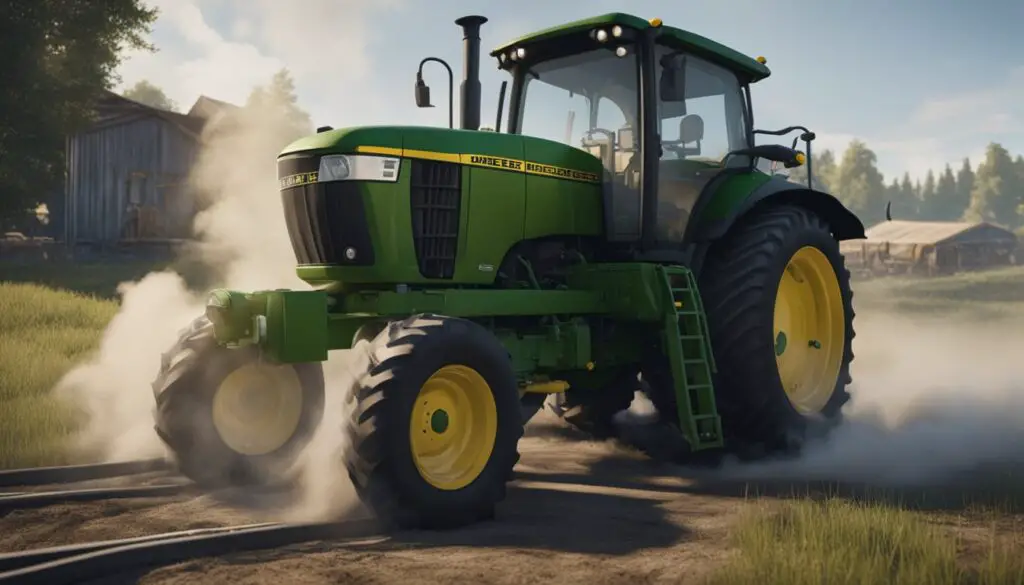
Any complex machinery, like the John Deere 333G, requires ongoing maintenance and careful operation. From engine troubles to hydraulic system malfunctions, addressing these problems promptly is crucial to maintaining the machine’s performance and longevity. This guide aims to present some of the typical challenges you might face with your 333G skid steer. By familiarizing yourself with common symptoms and fixes, you can take proactive steps to minimize downtime and keep your projects on track.
Key Takeaways
- Regular maintenance minimizes the risk of common John Deere 333G problems and ensures equipment longevity.
- Quick troubleshooting of engine and hydraulic issues can help prevent larger operational setbacks.
- Understanding your machinery’s undercarriage, tracks, and electrical system promotes better performance and efficiency.
Common Engine Issues in John Deere 333G
Your John Deere 333G is a powerhouse for tough jobs, but when engine issues crop up, it’s essential to tackle them swiftly to maintain reliability and performance.
Fuel System Challenges
In your John Deere 333G, fuel system complications can greatly impact engine performance. Fuel filters may become clogged due to debris or sediment, which can choke the normal flow of diesel fuel, starving the engine of the necessary input for combustion. Regularly checking and replacing fuel filters is key. You’ll want to inspect the fuel lines for blockages or leaks and ensure that the fuel tank is free of contaminants that could harm your fuel injectors.
- Check the fuel filter for choking; replace if necessary.
- Ensure fuel injectors and the injection nozzle are clean and clear from blockages.
- Confirm that oil pressure is within standard operational ranges to support proper lubrication of the combustion chambers.
Electrical and Starting Problems
Electrical and starting problems can be frustrating, but they’re often solvable with some troubleshooting. If your John Deere 333G won’t start, first check the battery connections to see if they are secure and corrosion-free. A faulty starter motor, solenoid, or worn cables and wiring could be to blame. Ensure that sensors are functioning correctly and that switches like the ignition switch are operational.
- Inspect and test the battery to ensure it can hold a charge.
- Examine electrical connections, especially around the starter motor and solenoid, for signs of wear or damage.
- If the starter motor isn’t engaging, consider checking the throttle cable and verifying that the starter solenoid and switches are working properly.
Hydraulic System Functionality
In this section, you’ll learn about the common hydraulic system issues that can occur with the John Deere 333G and how to identify and troubleshoot them effectively.
Identifying Hydraulic Problems
When you notice your John Deere 333G’s boom or bucket doesn’t respond as expected, it’s time to check for hydraulic problems. Look out for signs of hydraulic issues like unexpected machine movements, slower operation, or a complete lack of movement in the boom or bucket. It’s also wise to monitor the hydraulic pressure sensors, as they provide critical data on the system’s pressure and can help pinpoint the issue.
Pump and Filter Operations
To maintain the proper functioning of your hydraulic system, it is essential to ensure the hydraulic pump is in good condition and the hydraulic fluid level is adequate. If the pump is faulty, it won’t maintain the right pressure. Remember, any restriction can cause significant drops in hydraulic power. Equally important is the condition of the hydraulic filter; if it’s clogged, it can lead to contamination and reduced efficiency.
- Checklist for Maintenance:
- Pump: Inspect for damage or wear and tear.
- Fluid Level: Verify levels are within recommended thresholds.
- Filter: Replace as needed to prevent blockages.
Control System Complications
Your machine’s responsiveness is largely dependent on the health of the control system. If your joystick control circuit board is malfunctioning, neither your lift controls nor your bucket controls will work properly. Occasional checks and maintenance of these components can prevent sudden failure. Ensure all safety switches connected to the control system are functioning correctly to avoid inadvertent operation or damage to the hydraulic system.
- Troubleshooting Steps:
- Check joystick control circuit board for signs of damage or failure.
- Ensure safety switches are operational.
Undercarriage and Tracks
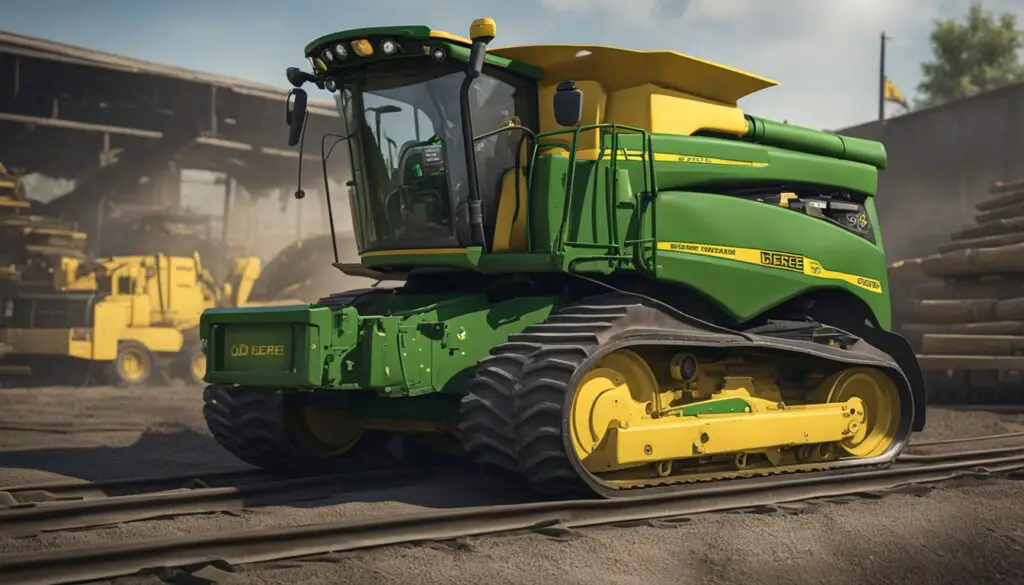
Maintaining your John Deere 333G skid steer involves regular checks on the undercarriage and tracks to ensure optimal performance and longevity. Proper track tension and maintenance are essential, and being adept at dealing with broken parts can save you time and reduce downtime.
Track Tension and Maintenance
Your John Deere 333G’s tracks are pivotal for stability and mobility but require correct tension to function properly. Incorrect track tension can lead to increased wear and even cause the tracks to slip off. Here’s a quick guide to help:
- Check track tension regularly: Follow manufacturer recommendations for proper tension levels.
- Inspect tracks: Look for signs of uneven wear or damage that could indicate an issue.
- Cleaning is crucial: After operation, remove debris from the undercarriage to prevent premature wear.
If you find the tracks are too tight or too loose, it’s important to adjust them according to the operator’s manual. This helps prevent strain on the undercarriage and tracks, reducing the chance of malfunctions.
Dealing with Broken Parts
When troubleshooting the undercarriage for broken parts, focus on these common areas:
- Loader arms (Boom): Ensure there’s no excessive wear or damage.
- Bucket fit: Check for any looseness that may indicate wear or a broken component.
- Tracks: Look for any sections that are worn out or have broken springs. Replace these as necessary.
If you discover broken parts, replace them promptly to maintain the integrity of the loader. Regular maintenance checks are your first line of defense and can significantly extend the life of your John Deere 333G’s undercarriage and tracks.
Operational Concerns
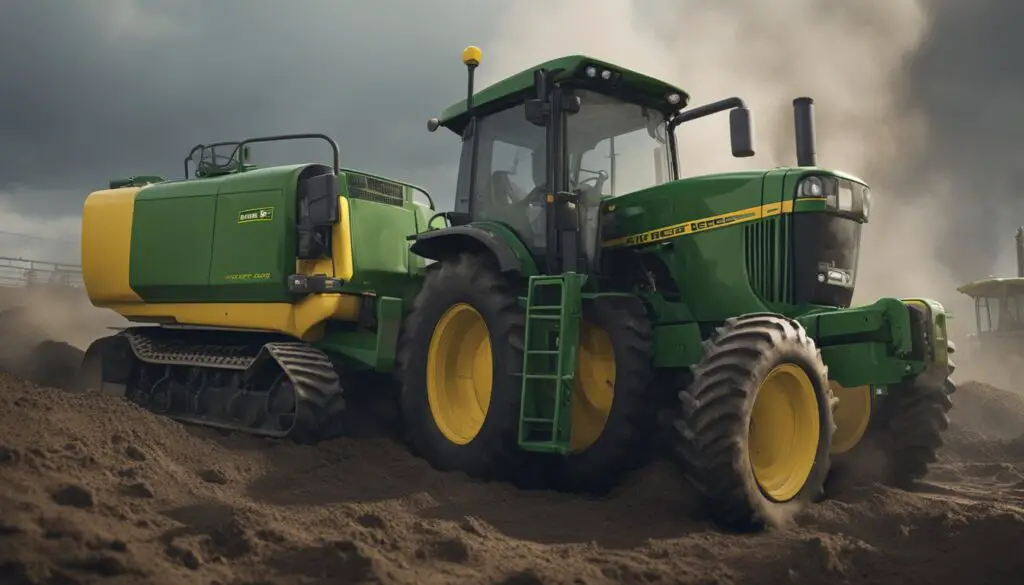
When using your John Deere 333G, you may encounter operational challenges that affect productivity and efficiency. Proper troubleshooting can help resolve these issues to keep the machine running smoothly.
Loader Performance and Bucket Issues
Your JD 333G’s loader performance hinges on its ability to maintain stability, lift height, and bucket control. If you notice diminished efficiency or erratic movement during operation, it’s important to check for hydraulic problems. Regularly inspect the hydraulic fluid levels and change the filter if necessary. Additionally, ensure all bucket fittings and connections are tight and secure to avoid any performance discrepancies.
Troubleshooting Controls and Switches
Issues with controls and switches can lead to unexpected down time. If your joystick control circuit board or gauge cluster is unresponsive, start by checking the power sources and connections. It’s essential to troubleshoot the seat switch and safety switches as they are pivotal for safe and accurate control of your JD 333G. Sometimes, a malfunctioning switch can limit operational capacity or even prevent starting the machine altogether.
Brake System and Safety Features
The JD 333G’s parking brake is integral for safety, but parking brake problems can arise. If you experience brake issues, inspect the brake wire for any signs of damage or wear. Stability of your machine also relies on these properly functioning safety features. Verify that all safety switches are engaged and in good working order to prevent potential hazards during operation. Regular maintenance and checks will go a long way in ensuring your brake system operates as expected.
Fuel and Oil Management
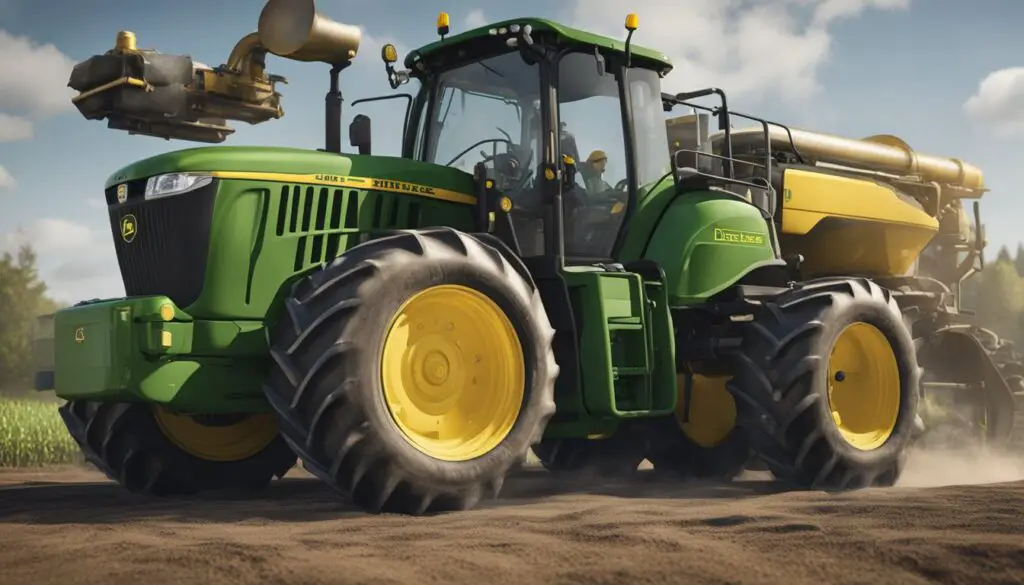
Proper fuel and oil management are crucial for maintaining the health and efficiency of your John Deere 333G. By understanding how to maximize fuel efficiency and conduct oil changes correctly, you can keep your machine running smoothly and avoid common engine problems.
Maximizing Fuel Efficiency
To ensure your John Deere 333G operates efficiently:
- Always use the recommended diesel fuel: Adhering to the recommended fuel type safeguards the engine and maximizes efficiency.
- Keep fuel filters clean: Replace fuel filters as part of regular maintenance to prevent clogs and ensure optimal engine performance.
- Monitor fuel capacity: Keep an eye on your fuel levels. Overfilling can be as detrimental as running with low fuel.
By staying on top of these aspects, you’ll ensure your John Deere 333G remains fuel-efficient and reduces the likelihood of fuel-related issues.
Oil Change Procedures and Tips
Regular oil changes are a significant part of your machine’s maintenance routine. Here’s how to do it right:
- Drain the oil when warm: It’s preferable to change the oil while it is warm to ensure better flow and removal of particles.
- Use the correct oil type: Check your owner’s manual for the recommended oil type for your John Deere 333G to maintain peak engine efficiency.
- Replace oil filters: Along with the oil change, replace the oil filter to remove any collected debris and prevent potential contamination.
Remember, timely maintenance, including regular checks of your oil levels, will protect your engine from wear and prolong the life of your machine.
Electrical System and Wiring
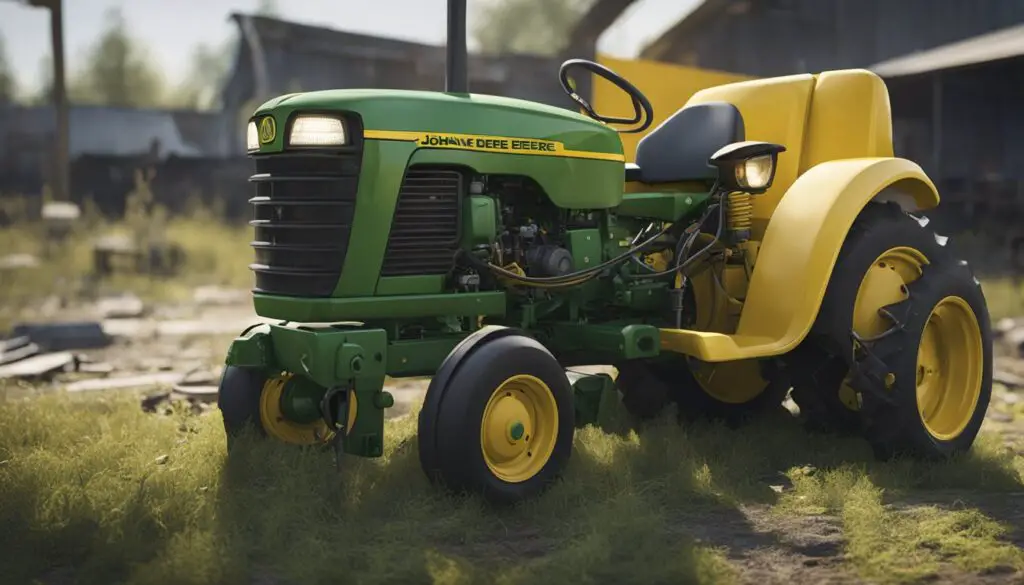
In your John Deere 333G, keeping the electrical system in check is crucial for reliable operation. Issues with starter and battery, as well as wiring harnesses, can cause unexpected downtimes.
Troubleshooting Starter and Battery Issues
When your John Deere 333G refuses to start, starter problems or battery issues are often to blame. Here’s how you can diagnose and fix these issues:
- Check Your Battery: Ensure that your battery is fully charged and that the connections are clean and secure. Look for any signs of corrosion on the battery terminals, and clean them if necessary.
- Examine Starter Connections: Your starter’s performance depends on solid connections. Inspect the wires leading to the starter for any loose connections or damage.
- Ignition Switch Check: If the starter and battery seem functional, consider the ignition switch. A faulty switch can impede the engine from cranking.
Handling Wire Harness and Cable Complications
A well-maintained wire harness and cables are pivotal for the smooth functioning of your loader’s electrical system:
- Inspect Your Wire Harness: Check the wire harness for any visible damage, wear, or fraying. Ensure all connections are tight and secure.
- Gauging the Gauge Cluster: If you notice inconsistencies or failures in your gauge cluster, it could indicate a wiring or connection issue. Check the related cables and ensure they have a good connection.
- Regular Maintenance Checks: Routine checks can prevent unexpected electrical issues. Incorporate a wiring inspection into your regular maintenance schedule.
By staying vigilant and addressing issues early, you maintain the integrity of your John Deere 333G’s electrical system and wiring.
Maintenance and Service Guidelines
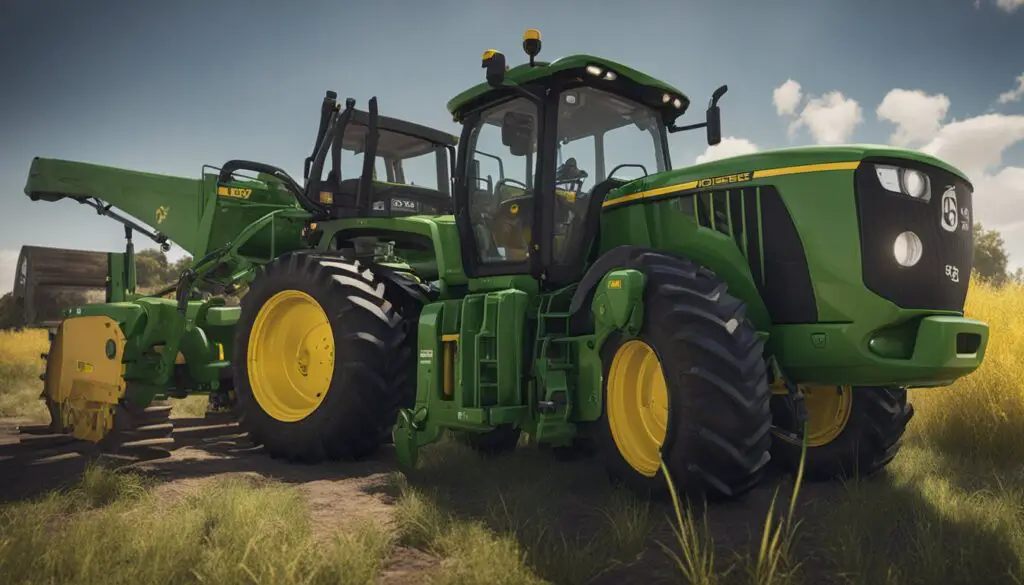
Regular maintenance of your John Deere 333G skid steer is key to ensuring productivity, efficiency, and reliability of your machine. Here are some practical service guidelines you should follow:
- Daily Checks: Before you start your day, check the engine oil levels, coolant levels, and hydraulic oil levels. Ensure that the air filter is clean and clear of debris.
- Fluids: Replace your engine oil, hydraulic fluid, and coolant according to the manufacturer’s recommended schedule. Use the table below to keep track of fluid changes: Fluid Type Change Frequency Engine Oil Every 250 hours Hydraulic Fluid Every 500 hours Coolant Every 1000 hours
- Filters: Regularly replace filters to prevent clogs and ensure smooth operation. Your main filters include:
- Engine Oil Filter
- Fuel Filter
- Hydraulic Filter
- Tires and Tracks: Inspect your tires or tracks for wear and tear. Proper inflation and tension are essential for optimum performance.
- Greasing: Lubricate the machine’s moving parts as necessary to reduce friction. The greasing schedule is typically every 50 hours of operation.
By adhering to these guidelines, you keep your John Deere skid steer in prime condition, which minimizes the chance of unexpected downtime and repairs. Remember that a well-maintained skid steer is a dependable one, so never skip on the service intervals! For specific maintenance questions, always refer to your John Deere 333G operating manual or contact a certified technician.
Frequently Asked Questions
In this section, you’ll find a handy guide answering common inquiries about the John Deere 333G Compact Track Loader. Whether you’re curious about typical issues, performance ratings, or the detailed specs, we’ve got you covered.
What are some common issues with the John Deere 333G Compact Track Loader?
You might come across a few typical issues with this model, such as engine trouble – often starting with the fuel system – hydraulic problems, and electrical complications like blown fuses or malfunctioning displays.
How do users rate the performance of the John Deere 333G?
Users generally note high satisfaction with the 333G’s performance, especially praising its robust building quality and reliability in various heavy-duty tasks.
What improvements have been made in the 2021 model of the John Deere 333G compared to earlier versions?
The 2021 model boasts enhanced features like improved hydraulic flow, advanced control features for better handling, and updated cabin designs for operator comfort.
What should I look for when buying a used John Deere 333G?
Check for any potential engine, hydraulic, or electrical issues. Also, inspect the undercarriage and tracks for wear, and ensure the maintenance records are up-to-date.
What are the detailed specifications of the John Deere 333G?
Detailed specifications include a turbocharged diesel engine with a rated power of 100 hp, an operating weight of approximately 12,100 lb, and a rated operating capacity of 3,700 lb.
What is the lift capacity of the John Deere 333G, and how does it compare to other models?
The 333G has a lift capacity of around 3,700 lb, making it quite competitive in its class. It offers robust performance for most load-bearing operations compared to other similar models.

